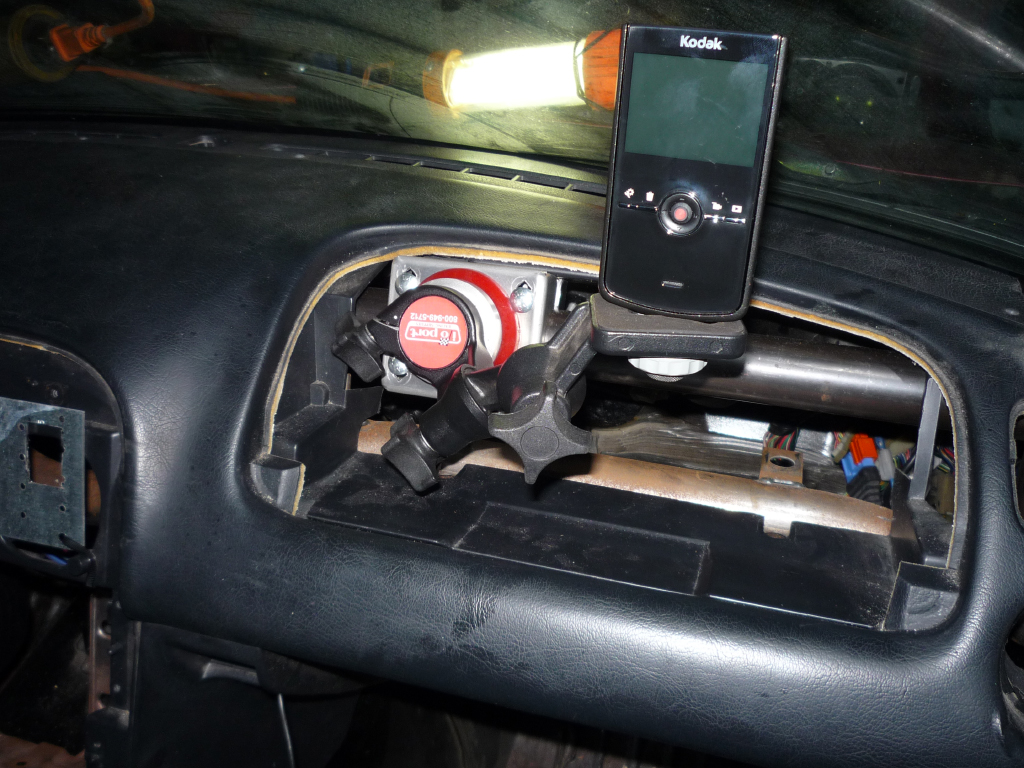Spoiler Alert! This was a great camera, but it has long been retired and replaced with more advanced cameras featuring updated technology.
We have all been there. We want need a computer, gadget, phone, camera, car, or girlfriend that is/has/does “this, this, this, and that”, but we won’t can’t wait and we just jump-in, even though the option available to us might only offer “this, this, and that” (and maybe even the that isn’t so great). It might not be what we want, but it’s close. This is what has been happening with me, as I have searched for a video camera to shoot in-car footage of our 24 Hours of LeMons endurance races.
Sure, I could buy from ChaseCam and call it a day, but their basic kit is almost $1000 and isn’t HD. This camera is for LeMons, not LeMans. I have bought a bullet camera coupled with a cheap portable video recorder, but the quality, usability, and durability of the recorder was poor. Then I tried a Panasonic Lumix DMC-LZ8. The video quality was good (still not HD), but like many other digital cameras that also shoot video – it has a 2 GB file size limitation. In the case of the Lumix, that equates to about 20 minutes of footage. Perfect for a session at an HPDE or similar track event, but useless for seven or eight hours of continuous racing.
Luckily, thanks to YouTube and well, people like me, who like to upload racing videos, there has been an explosion of small, inexpensive video cameras from companies like Flip and GoPro. I have been watching carefully, trying to figure-out when to jump-in, when from out of nowhere, the perfect camera comes along from…Kodak. Kodak? I thought I would be buying a camera from a hip, edgy company from a tattooed kid skating up to me with a POV camera strapped to his helmet. Instead, I bought a camera from a guy with a top hat and monocle. Did he deliver?

The Camera
The Zi8 is about the size of an iPhone, but a bit thicker. The front has the fixed lens and a large plastic cover, behind which is the rechargeable Li-ion battery. The back of the camera has a 2.5″ color LCD screen, four buttons, and a joystick, which is also a fifth button. There is also a tiny speaker for playback. Around the edges of the camera are various ports and jacks, a macro switch, a standard camera mount, access to the SD card, and a built-in, flip-out USB dongle. The camera is intended to be held upright during filming, more like a cellphone, rather than a traditional camera.

My overall impression is that it is a nice little design, but it is all plastic and it looks like it will break the first time it’s dropped. The flip-out USB dongle is also something that concerns me. I understand its inclusion, but it seems awkward in some situations and also seems like it might break over time. The benefits of the all plastic construction are that it is very light (about 4 oz.) and the camera is inexpensive.
The Specs
This camera meets every specification that I had for an in-car camera:
- HD Video: shoots in multiple resolutions (1080p/30fps, 720p/60fps, 720p/30fps, WVGA)
- SD Storage: records to high-speed SD cards, which is the advantage this has over similar products. The SD card capacity and the camera resolution can be coordinated to accommodate the desired event length. With a 32 GB SD card (not included), there is 5h 37m of storage at the highest resolution. With lower resolutions, there is much more storage and the camera will shoot continuously until it is out.
- AC Adapter: the Li-ion battery is charged in situ with an AC adapter, but more importantly, the camera will shoot while plugged-in. This means the camera can be hard-wired into the car, so shooting is never limited by battery capacity.
- External Microphone Jack: the built-in mic (mono) worked fine in our first event with this camera, but it is important to have the option to use an external mic for better quality (stereo) and to help avoid things like wind noise.
- Image Stabilization: needed to help produce a clear image while being in the unstable environment of a race car. I can’t believe this is in a camera at this price point. Oh yeah:
- Inexpensive: This camera lists for about $180. A 32 GB (if you need that much) Class 4 SDHC SD card is about $90. Together, this is what I paid for a bullet camera with no recorder.
The camera also comes with an HDMI port and cable(!), so you can just plug into an HDTV and start watching your videos. This wasn’t a consideration for me, but it is a very nice feature at this price point.
Use and Performance
The camera cannot be easier to use, which is perfect for a driver or crew member wearing gloves. The camera boots very quickly and displays the resolution options on-screen for a couple of seconds (defaulting to the last resolution selected). The user can quickly change the resolution using the joystick, or he can ignore the prompt. Then he can press the red button to begin recording. That’s it.
Still, there was no time for a test video before installing this into our Miata for the 2009 Yee-Haw It’s LeMons Texas endurance race in October 2009. We hardwired the camera into the car and mounted it to an I/O Port camera mount, attached to the dash bar of the car. Again, I don’t like that the camera’s mount receiver is plastic, but since the camera is so light, I suppose there isn’t much force being applied to it.

We used a 32GB card, set the resolution to 720p/30fps and recorded the whole 13 hour race! Well, we would have recorded the whole race, but we left the camera unplugged on Sunday morning, so it ran on battery power until it died. When we noticed it wasn’t on, we plugged it back in and it started recording again. I have uploaded a sample video to Vimeo. This is a little over one lap of MSR Houston during the LeMons race. The raw .mov file was converted to .avi, which I then imported into Windows Movie Maker and exported as a Windows Media HD 720p file. There has probably been some video quality degradation, but since this is typical of how most of my videos will be uploaded, I thought this would be a more realistic example than providing raw, unedited, and uncompressed footage.
We watched the raw (.mov) files on a friend’s 16:9 TV and the quality was amazing.
Conclusion
This video camera met my specifications, exceeded my expectations, and performed admirably under racing conditions. And it did so for an unbelievably low price. I can highly recommend this camera for in-car videos.
Highs: HD video, SD memory, AC power, external mic input, image stabilization, good user interface, price
Lows: all-plastic construction, USB dongle, Quicktime file format difficult for PC users to edit

Please pin, tweet, and share! Most importantly, let me know what you think in the comments below.











2 comments